An Objective Peek at the Facts, Fiction, & Missing Links
Chances are you’ve heard of some pretty serious controversy of late about the so-called miracle product, Green Pasture’s fermented cod liver oil (FCLO). But even if you’ve read all of the relevant posts about this cod liver crisis, you probably noticed the same confounding issue with every single one of them: despite a lot of numbers, quotations, and definitive statements, all of these pieces have been blatantly biased, and most of the claims made from either side are ambiguous and lacking in real, scientific backing. So, I wanted to pull together all of the evidence (and note the gaps herein) and present my readers with a fact-based perspective on this topic.
Table of Contents[Hide][Show]
Okay, let’s back up a bit. The flare-up in FCLO-related articles and accusations in August 2015 was a direct result of Kaayla Daniel, Ph.D., releasing her new investigative report entitled, “Hook, Line and Stinker! The Truth about Fermented Cod Liver Oil.” (You can read it for free here after opting in to Dr. Daniel’s mailing list.) Dr. Daniel is Vice President of the Weston A. Price Foundation, a long-standing backer of Green Pasture’s products—especially their FCLO. The report, according to Dr. Daniel, is a response to the Weston A. Price Foundation’s refusal to respond to concerns about FCLO’s safety. So, she sent samples of Green Pasture FCLO to five independent laboratories for analysis. The results? We’ll get to that later.
What you may or may not know, however, is that this controversy started years ago. So, here’s a timeline of events, starting from the beginning…
Controversy Timeline
1939: Weston A. Price publishes his well-known work, Nutrition and Physical Degeneration, based on his experiences doing research observing indigenous populations. He recommends cod liver oil for people of all ages and with assorted ailments—a policy adopted later by the Weston A. Price Foundation.
 1945: Weston A. Price publishes another edition of Nutrition and Physical Degeneration, with an additional chapter called “A New Vitamin-Like Activator,” in which he describes an essential nutrient that he called “Activator X” or the “X-factor” which is found in butter oil.
1945: Weston A. Price publishes another edition of Nutrition and Physical Degeneration, with an additional chapter called “A New Vitamin-Like Activator,” in which he describes an essential nutrient that he called “Activator X” or the “X-factor” which is found in butter oil.
2007: Green Pasture releases its fermented cod liver oil, and it is highly recommended by the Weston A. Price Foundation and ranked the absolute best cod liver option.
2008: Online publications from Chris Masterjohn and others note that Activator X has been identified as vitamin K2
2012: Ron Schmid reports having heart failure due to taking large doses (tablespoons per day) of Green Pasture’s FCLO: (http://www.drrons.com/product-blog/Too-Much-of-a-NOT-so-Good-Thing)
->“In the six years I took fermented cod liver oil, I went from running ten miles a day to being barely able to walk across the room. My cardiologist, a world renowned physician at Yale-New Haven Hospital named Mark Marieb, was at first skeptical of my theory that cod liver oil had caused my heart problems. But as he has followed what he calls my ‘miraculous recovery’ from advanced heart failure (the usual prognosis is death within three to six months, and when first admitted at Yale-New Haven, I was seen by the Heart Transplant Team), he has gradually accepted that the cause of my heart failure was excessive amounts of cod liver oil.” -Ron Schmid
January 2013: Nourished and Nurtured blog posts about her family’s unsuccessful transition from normal CLO to FCLO (http://nourishedandnurtured.blogspot.ca/2013/01/why-we-stopped-taking-fermented-cod.html)
->The 200+ comments seem to spark the debate of whether FCLO may be rancid
March 2014: Dan Corrigan of Corganic starts to carry “Extra-Virgin Cod Liver Oil” from Norway and starts debate on whether CLO can be fermented.
->Sally Fallon Morell (President of WAPF) supposedly threatens to ban Corrigan for stoking the anti-FCLO flames.
Nutrivore Weekly Serving Matrix
An easy-to-use and flexible weekly checklist
to help you maximize nutrient-density.
The Weekly Serving Matrix is very helpful! I’ve been eating along these lines but this really helps me know where to focus vs. which foods serve a more secondary role. It’s super helpful and has taken a lot of worry out of my meal planning. Thanks!
Jan
December 2014: According to Dr. Kaayla Daniel, the WAPF board opted not to test Green Pasture independently:
->“WAPF’s Board of Directors voted against testing based on Sally Fallon Morell’s beliefs, David Wetzel’s assurances, and scientific data of limited and questionable value. I was strongly advised to relax, leave the science to people who could be ‘fair to Dave’ and to toe the FCLO line.” -Kaayla Daniel, PhD
February 2015: WAPF releases rebuttal of concerns about FCLO being rancid and cites QA testing that Dr. Kaayla Daniel claims is not thorough or accurate.
->Dr. Daniel is not happy with the WAPF investigation and sends in her own samples for testing.
August 2015: Dr. Daniel releases her digital report “Hook, Line and Stinker! The Truth about Fermented Cod Liver Oil.” for free for anyone who signs up for her email subscriber list.
->All hell breaks loose.
The Accusations
Sure, Fermented Cod Liver Oil has been criticized for years based on its taste, but this report is a whole new kettle of fish (pun intended). Dr. Daniel’s lambasting of Green Pasture Fermented Cod Liver Oil relies on several key criticisms mainly derived from the results of lab analysis from five different (undisclosed) labs to which she sent samples.
Let’s go through her key points one by one.
Fermenting Cod Livers: Fact or Fiction?
One of the main arguments against Green Pasture’s FCLO is that fermented cod liver oil couldn’t possibly be fermented. I have a few thoughts on this, including both the science of fermentation and the politics behind the mystery.
Firstly, I think it’s really important that my readers know that Dave Wetzel, founder of Green Pasture, only shares his methods with people that he personally flies into their facilities for a private tour. There are several bloggers and leaders in the Weston A. Price Foundation who claim to have had this tour and that the experience convinced them of the legitimacy of the methods. Being shrouded in mystery, especially when your product is repeatedly called into question for its quality and micronutrient content, is just something I can’t respect or endorse. It is also noteworthy that Dr. Daniel supposedly turned down one of these tours and has not communicated directly with Dave Wetzel about his products at all.
So, taking the fact that we don’t know how Green Pasture actually produces FCLO, let’s makes some guesses here as to exactly how this product could be made. There are three possibilities we can look at for when and how the fermentation takes place:
1. Cod liver oil has already been extracted from the livers and then is fermented. This method seems to be what Dr. Daniel is insistent happens at Green Pasture, since she believes that no carbohydrates would be available for fermentation:
“The idea that cod livers could be fermented is ludicrous on the face of it. Lactic acid bacteria show a stunning capacity to degrade different carbohydrates and related compounds into the primary end product of lactic acid. But they have very limited capacity to synthesize the amino acids of protein and none at all to synthesize fats!” – Hook, Line, and Stinker! Page 8
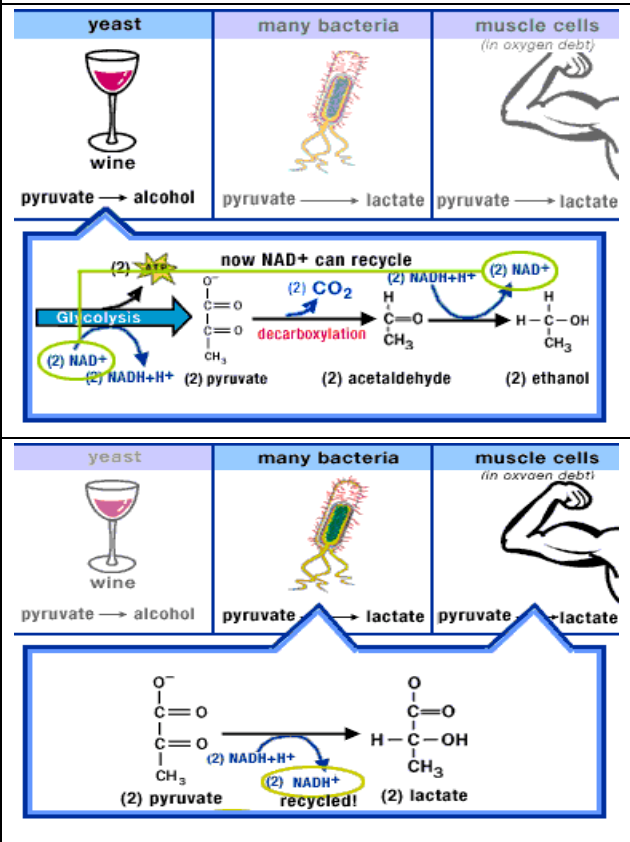 Since the oil does not contain carbohydrate, Dr. Daniel is stating that fermentation could not exist. Yet, it seems that she may have forgotten that protein can also be digested into pyruvate, which can also be used for fermentation.
Since the oil does not contain carbohydrate, Dr. Daniel is stating that fermentation could not exist. Yet, it seems that she may have forgotten that protein can also be digested into pyruvate, which can also be used for fermentation.
2. Additionally, I don’t think we can assume that the actual oil is fermented. What about the whole livers? If the whole livers are fermented either prior to oil separation or as a means to facilitate oil separation, then there is a great chance that the glycogen is fermented after being converted to glucose.
3. We don’t know what fermentation starter is used by Green Pasture. This starter could very well include carbohydrates as fuel for the microbes carrying out the fermentation (typical in making fermented sausages) and this could apply to either fermentation of the whole cod livers or fermentation of the oil after extraction.
The verdict on fermentation in Green Pasture’s FCLO? We may not know the specifics, but looking at more than fundamental biochemistry tells me that it is certainly possible that fermentation took place at some point in the process. It would, however, be nice to have an actual answer on the topic.
Measures of Rancidity: An Industry Standard
One of the biggest arguments in Dr. Daniel’s report is that the oil from Green Pasture is rancid.
Rancidity, from a non-scientific perspective, is essentially when something smells rotten or bad (so, for an example, a lot of fermented dairy may smell rancid to some people), and there are several objective, scientific measures of rancidity that the food industry regularly uses to for quality assurance on their products. Dr. Daniel cites that her concern about rancidity began due to the smell of FCLO, which tends to be a strong, not-at-all-pleasant fishy experience. But, Dr. Daniel fails to explain the basics of rancidity to her readers, even though this is an industry standardized process that doesn’t actually require too much interpretation.
Basically, there are two different kinds of oil rancidity: hydrolytic rancidity and oxidative rancidity. Hydrolytic rancidity occurs when the triglycerides in oils react with water to form free fatty acids (FFAs) and soaps (byproducts of FFAs). (Triglyercides are fat storage molecules, each a unit of three fatty acids with a glyceride molecule binding them together.) Oxidative rancidity occurs when the unsaturated fatty acids in oils react with oxygen to generate unstable compounds.
The standard tests for these two ways that a fat can go rancid are as follows.
- Peroxide: peroxide is a measure of oxidative rancidity, and it measures the concentration of peroxides and hydroperoxides in the oil. These compounds are formed in the early stages of lipid oxidation. High and moderate levels are considered to be indicative of rancidity, which is not the case for either sets of results reported here.
- Anisidine: anisidine is another way to measure oxidative rancidity, as it binds with the dangerous byproducts. While Green Pasture does not include an actual value for its anisidine results, the company notes that their values are normal.
- Total Oxidation (totox): this is a value calculated from peroxide and anisidine results, creating an estimate of total oxidative rancidity. Since both results were normal in Dr. Daniel’s results, it is unsurprising that these values are well within a normal range. Thus, based on both Dr. Daniel’s results and Green Pasture’s included results.
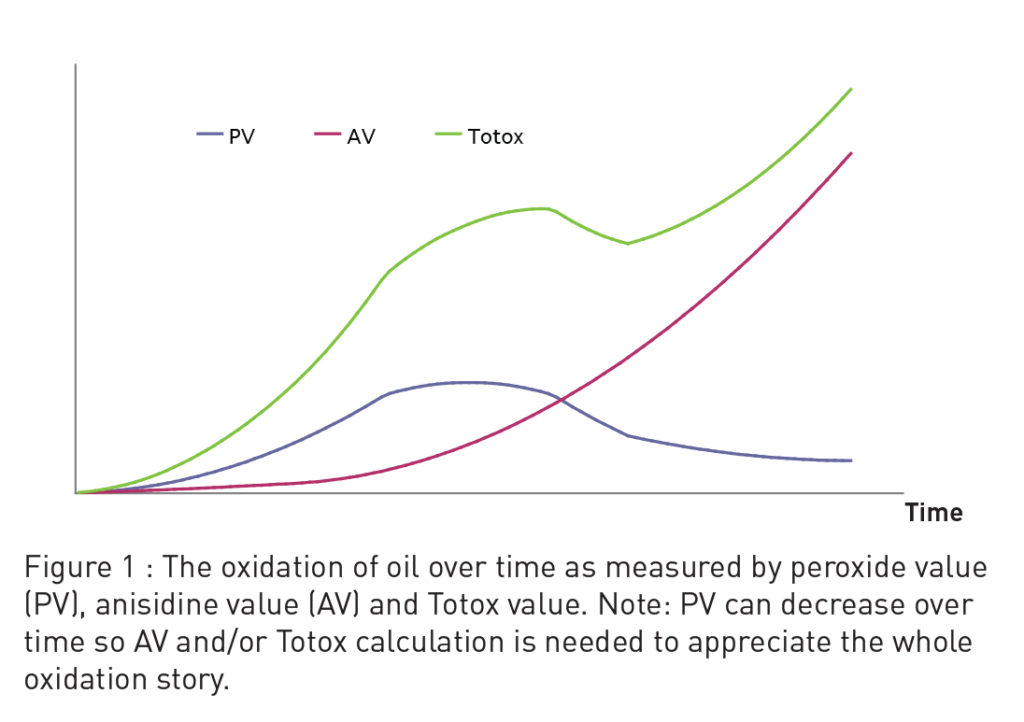
- Free Fatty Acids: free fatty acids are a measure of the percent of fatty acids in an oil that have split from the triglycerides. Our understanding of how free fatty acids could affect a person is pretty mixed. Like with cholesterol, there is a difference between dietary FFAs and serum (blood) FFAs. Having high blood FFAs is definitely bad for your health, but eating FFAs doesn’t mean that they shoot immediately into your bloodstream! While Dr. Daniel states conclusively that FFAs are dangerous, that isn’t necessarily supported by the science. The source of FFAs is really important: they can come from natural processes like the fermentation of these oils, or they can come from hydrolytic rancidity. What is more telling about rancidity is that type of FFAs found in the oil, which Dr. Daniel doesn’t report.
- Acid Value: this report is just another way of quantifying that amount of FFAs in the product. Acid value confirms that there is a high amount of FFAs in the FCLO.
Dr. Daniel includes a lot of numbers in her reports, especially when it comes to this rancidity issue. To make it a little easier to digest, I made a table to compare Dr. Daniel’s results (remember, these samples went to 5 labs and each lab reported a slightly different finding) with Green Pasture’s results as well as what is considered the normal or acceptable range for each test. The results highlighted in green are in a normal range, and the results highlighted in red are high.
| Test (unit) | Normal Range | Dr. Daniel’s Result(s) | Green Pasture’s Result |
| Peroxide (meq/kg) | < 6 | 0.2-2.42 | 3.9 |
| Anisidine | < 20 | 3.44-13.00 | Unavailable |
| Total Oxidation (meq/kg) | < 26 | 1.0-7.2 | Unavailable |
| Free Fatty Acids (%) | 1%-7% | 16.2%-40.10% | 19.2%-25.3% |
| Acid Value (mg KOH/g) | < 3 | 32.3 – 79.80 | Unavailable |
The test results do seem to indicate that Green Pasture FCLO is rancid via some hydrolytic rancidity. However, the test results do not bear our Dr. Daniel’s conclusions that Green Pasture FCLO has undergone oxidative rancidity.
But, here’s the thing. Unlike oxidative rancidity which produces some very toxic products, whether or not we need to worry about hydrolytic rancidity is not a question that is easy to answer. And, since we don’t understand the source of the FCLO’s high FFA value, we can’t make any conclusions—and, according to some, the high FFAs could even be a benefit.
Biogenic Amines: “Harmless” Byproducts of Fermentation?
Yet another measure of potential consumer harm that Dr. Daniel reports on is a type of molecule called biogenic amines (these are discussed in detail in the context of histamine intolerance in Chapter 9 of The Paleo Approach). These compounds are generally the result of incomplete lactic-acid fermentation; for example, some cured meats are also fermented, and small amounts of biogenic amines give them a distinct flavor.
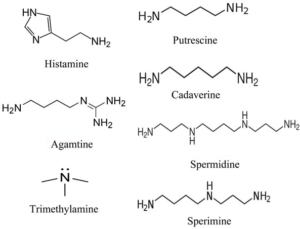 Green Pasture reports on their website that their FCLO contains normal values of biogenic amines. For Dr. Daniel’s investigation, the various labs reported different findings; while the rest of the results were normal, one lab found unusually high levels of the biogenic amines tyramine, tryptamine, putrecine, phenyltylaine, and cadaverine. Dr. Daniel notes that this high result could explain some people’s poor response to FCLO, which is definitely an accurate observation.
Green Pasture reports on their website that their FCLO contains normal values of biogenic amines. For Dr. Daniel’s investigation, the various labs reported different findings; while the rest of the results were normal, one lab found unusually high levels of the biogenic amines tyramine, tryptamine, putrecine, phenyltylaine, and cadaverine. Dr. Daniel notes that this high result could explain some people’s poor response to FCLO, which is definitely an accurate observation.
Assuming that Green Pasture does not blatantly lie about their quality assurance results on their website, there are two possible explanations for this discrepancy. Either Green Pasture is inconsistent in its production and there is a variety of results depending on the batch of FCLO, or Dr. Daniel’s labs (whose names were not disclosed) were not reliable in their testing methods. I don’t like either option, frankly, but I think it’s important to keep both options in mind. Regardless, the fact that there was a high result makes me hesitate to recommend this product to someone who is sensitive to specific amines such as having histamine intolerance (and it definitely makes me want more professional, unbiased testing!).
Fat Soluble Goldmine or Not?
Another main point in Dr. Daniel’s report was to demonstrate that FCLO was not as vitamin-rich as it is advertised. To help us visualize the discrepancy, here is another table:
| Vitamin | Dr. Daniel’s Result(s) | Green Pasture’s Claim |
| A | 3147.6 IU | 135.5-12,557.5 IU |
| D2 | 0.172 IU | 3134.7-11,497.8 IU |
| D3 | 75.7-211.60 IU | 387-2055 IU |
| E | 10.1 mg/100 g | Unreported |
| K2 | 17.35 – 19.44 ng/g | 5.65-34.15 mg/mL |
So, some of these are not a surprise. It looks like the Vitamin E and K results, at least, are not remarkably low in comparison to what is reported on Green Pasture’s website. The biggest discrepancies here are vitamins A and D.
Dr. Daniel goes into extensive detail in her report about the potential issues with the lab that Dave Wetzel uses to analyze his samples, called UBE Analytical Laboratories. And, the interwebs are filled with people weighing in on this issue and raising questions such as the vitamins being present in other isoforms that these tests aren’t designed to detect. Again, we go back to the same question: who is reporting the most reliable data? Unfortunately, given this vast of a discrepancy, we just can’t trust anyone yet. And, given that the fat soluble vitamin content is the major health claim of FCLO, this is a question that needs to be answered.
As far as vitamin D supplementation goes, I wanted to make note of the valid point that Dr. Daniel makes in “Hook, Line, and Stinker!” and that some of her dissenters made in their responses: measuring vitamin D is actually not a fine-tuned science. There are several ways that it can be assessed, including both the actual vitamin content of the oil and its bioactivity. Feeding studies can give us perhaps the best information about the quality of vitamin D content than actual amounts (where serum vitamin D levels are measured before and after a supplementation course either in humans or animals). But, feeding studies have not been developed into a reliable testing technique nor have these studies have never been done with FCLO, so all I can say is that I’m looking forward to seeing more research this.
Fermented “Cod” Liver Oil?
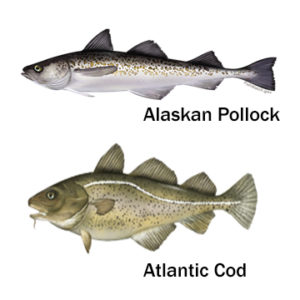 Dr. Daniel also found one unexpected result: in examining the EPA to DHA ratios, she found that at least one sample had a ratio that was far from what would be expected from a sample of North Atlantic cod liver oil.
Dr. Daniel also found one unexpected result: in examining the EPA to DHA ratios, she found that at least one sample had a ratio that was far from what would be expected from a sample of North Atlantic cod liver oil.
In cod liver oil, there should be a ratio that has more DHA than EPA (example: 11.0 to 8.1), but most samples actually had more EPA than DHA—a very unlikely phenomenon in a sample of purely Atlantic cod. After a DNA analysis, Dr. Daniel found that the sample was from Alaskan Pollock and not Atlantic cod.
Yikes. So, while Pollock is in the cod family, it makes me wonder: why doesn’t Green Pasture want to aim for full visibility with its thousand of customers? This issue is certainly more ethical than nutritional (there isn’t that much of a difference in these two oils, other than the DHA to EPA ratio I mentioned above). But still, it should be properly labeled and this finding doesn’t shine a great light for Wetzel’s character.
Trans Fats Where They Shouldn’t Be
One of the last points that Dr. Daniel includes in her “Hook, Line, and Stinker” expose is that there was an unusual amount of trans fats found in some of the samples. As we all know, trans fats can be a significant health concern, depending on their type and source.
One lab found that there was 3.22% trans fat content and that these fats were an 18:3 cis ratio, which would not be found organically in Alaskan Pollock. Dr. Daniel argues that this trans fat content must certainly come from vegetable oil adulteration, either during the fermentation process or as a filler ingredient afterward. These trans fats could also be a byproduct of microbe digestion during or after fermentation—or it could even trace back to the diet or nutritional synthesis of the fish themselves. So, like with the FFAs and biogenic amines, this result could be an un-alarming natural byproduct, or it could be a potentially dangerous compound found in FCLO. We just don’t know enough to have a definitive answer.
And Finally, that “Activator X” Question
One of Dr. Weston A. Price’s original recommendations had been to take cod liver oil with butter oil, because it contains the “Activator X” that I mention in my timeline. Observational research from laypersons involved with the Weston A. Price foundation seem to have concluded that this compound is in fact vitamin K2, which is supposedly found in higher concentrations in grass-fed butter oil. Yet, Dr. Daniel’s lab compared Green Pasture’s butter oil with a grass-fed butter and found that the content was comparable: 393.84 ng/g vs 335.70 ng/g. Dr. Daniel takes this to mean that vitamin K2 isn’t “Activator X” after all—and I have to admit that I’m not sure I care too much either way (let’s leave the Weston A. Price Foundation to debate over that one, shall we?).
While understanding of vitamin K2 is still in its infancy, it is now known to be essential for bone and dental health, and K2 supplementation is being investigated for the treatment
of osteoporosis. Vitamin K2 also has antioxidant and anti-inflammatory properties, and improves immune function. It also protects neurons from the oxidative damage induced by methylmercury. Increased dietary intake of vitamin K2 reduces the risk of coronary heart disease, aortic atherosclerosis, and even all-cause mortality (meaning that the richer in vitamin K2 your diet is, the less likely you are to die from anything, even old age!). I just think this micronutrient is awesome, whether it’s Activator X or not!
Thoughts and Conclusions (or Lack Thereof)
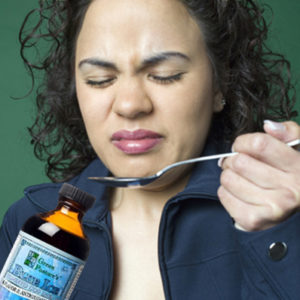
So, I just threw a lot of science and numbers at you (I totally do that to my readers. All. The. Time.). If you made it through the whole thing without falling asleep, you may have noticed a singular tone throughout this post: skepticism. The bottom line is that we just don’t know enough to make any strong conclusions. Though Dr. Kaayla Daniel’s clear opinion throughout her report is that she hit a home run with this work, the reality is that there are a lot of holes in the data and a few jumped-to conclusions. We don’t even know where these tests were conducted or with what methods—how are we to trust these results definitively? Her attitude throughout the work, unfortunately, clouds what might have been a good, unbiased (much shorter) report. On the flipside, the mystery behind Green Pasture’s methods is rather off-putting, and I hope that the report will lead to more clarity from Dave Wetzel and his crew (this definitely is one of those “buyer beware” moments!).
Taking it all into consideration, I would need to see a lot more definitive, professional testing before I were to make a recommendation to take Green Pasture’s fermented cold liver oil. The good news is that you can get all of these nutrients from your food (and some sunshine). The absolute best source of omega-3s is organ meat and fatty, fresh-water seafood (from the original source and without the possibility of rancidity!). As far as your fat-soluble vitamins go, you can get what you need from regularly eating those foods, egg yolks, and grass-fed red meats. Committing to spending 15 minutes or more in the sunshine every day really helps with those vitamin D levels, too! And of course, you can get an overload of information on micronutrients, especially in the context of immune function, in my book, The Paleo Approach.
References
Masterjohn, Christopher. “ On the Trail of the Elusive X Factor: A Sixty-Two Year Old Mystery Finally Solved”
NP Analytical Laboratories. “Measuring Rancidity in Fats and Oils.” 2015.
Dyerberg J, et al. “Bioavailability of marine n-3 fatty acid formulations”. Prostaglandins Leukotrienes Essent. Fatty Acids(2010),doi:10.1016/j.plefa.2010.06.007
Santos, M.H.Silla. “Biogenic amines: their importance in foods”. International Journal of Food Microbiology 29 (2-3): 213–231. doi:10.1016/0168-1605(95)00032-1
ThinkWell Corp. “Fermentation of the Pyruvate.” Purdue University. https://www.chem.purdue.edu/courses/chm333/images/Fermentation%20Pyruvate.pdf
Wetzel, David. “REVISED – Response to Questions on Fermented Cod Liver Oil.” Green Pasture. http://www.greenpasture.org/fermented-cod-liver-oil-butter-oil-vitamin-d-vitamin-a/response-to-questions-on-fermented-cod-liver-oil/

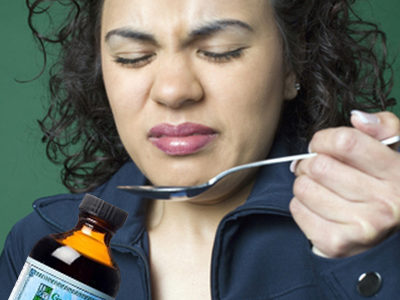





 Book Review: Down South Paleo by Jennifer Robins
Book Review: Down South Paleo by Jennifer Robins